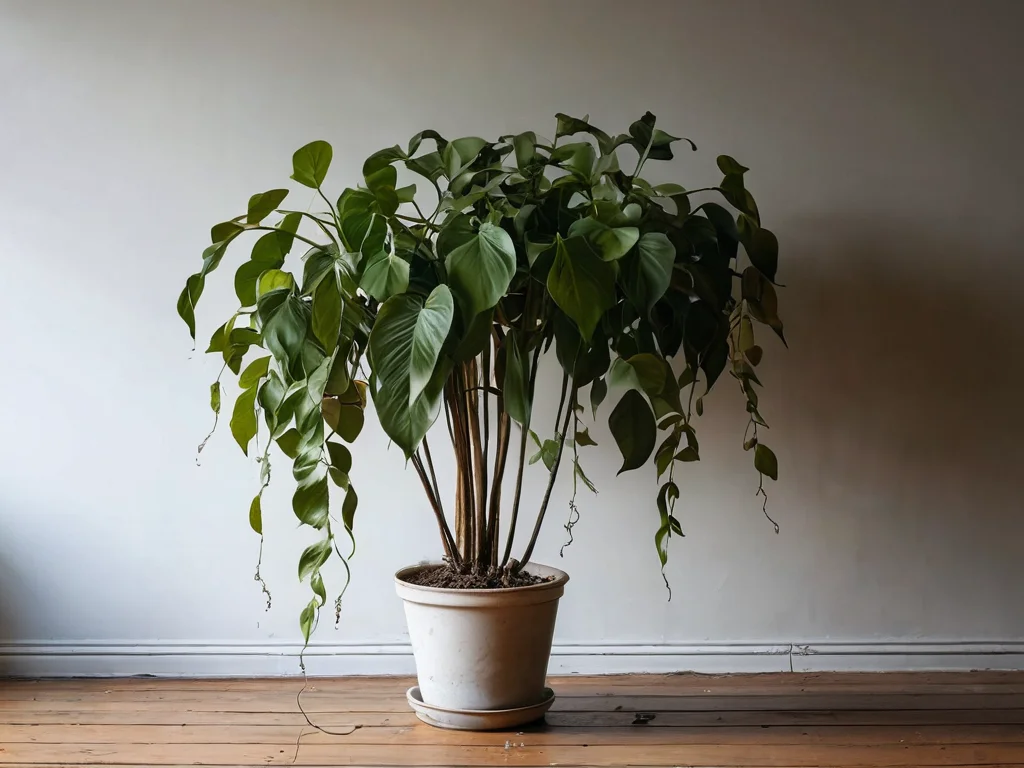Greetings, dear readers of fengshuihome.ru! Today we will discuss one of the most delicate, yet incredibly important aspects of your home’s harmony – the health and vitality of your green companions. In the art of Feng Shui, plants are not just decorative elements; they are living indicators of the space’s energetic state, sensitively reacting to the flow of Qi and reflecting it in their appearance. When a plant begins to wilt or get sick, it’s not just an aesthetic problem; it’s a signal that cannot be ignored, as it can indicate an imbalance of energies in your home, affecting all areas of your life – from health and well-being to luck and prosperity. We will help you learn to recognize these signs, understand their meaning, and respond effectively to restore harmony and attract positive energy into your home.
The Living Energy of the Home: Why Wilting Plants are an Alarm Bell for Feng Shui?
It is believed that every living plant in your home is a small generator of beneficial Sheng Qi energy. This energy is a symbol of growth, vitality, renewal, and prosperity. When you enter a room filled with healthy, strong plants, you involuntarily feel a surge of vigor, freshness, and tranquility. This is no accident, as plants actively absorb carbon dioxide and release oxygen, purifying the air, and from a Feng Shui perspective, they also purify and harmonize the energetic space. They are like small antennas, capturing and transforming cosmic energy flows, making them softer and more favorable for human existence.
However, as soon as a plant begins to wilt, its leaves turn yellow, dry out, or become spotted, its stems droop, it ceases to be a source of Sheng Qi. On the contrary, it begins to emit energy of stagnation, decline, and illness – what is called Sha Qi in Feng Shui. This is a slow but destructive energy that spreads throughout the house like an invisible web and can negatively affect its inhabitants. A wilting plant becomes a kind of energy vampire that not only brings no benefit but also drains the vitality from the space and its occupants. It serves as a visual and energetic reminder of death, decay, and stagnation, which is the complete opposite of Feng Shui goals – attracting vitality and prosperity.
Imagine your home as a living organism, and plants as its lungs and skin. If the lungs are polluted and the skin is covered with sores, the entire organism suffers. It’s the same here: wilting plants signal that something is wrong with the energetic body of your home. This can be due to insufficient care for the plant itself, or more profound problems in the room’s energy, such as the presence of geopathic zones, accumulation of negative emotions, or simply incorrect placement of objects blocking natural Qi flows. Therefore, it is very important not just to remove a sick plant, but to understand the cause of its “ailment” and eliminate it to restore harmony.
Sha Energy: How a Sick Plant Attracts Negativity and Blocks Luck Flows
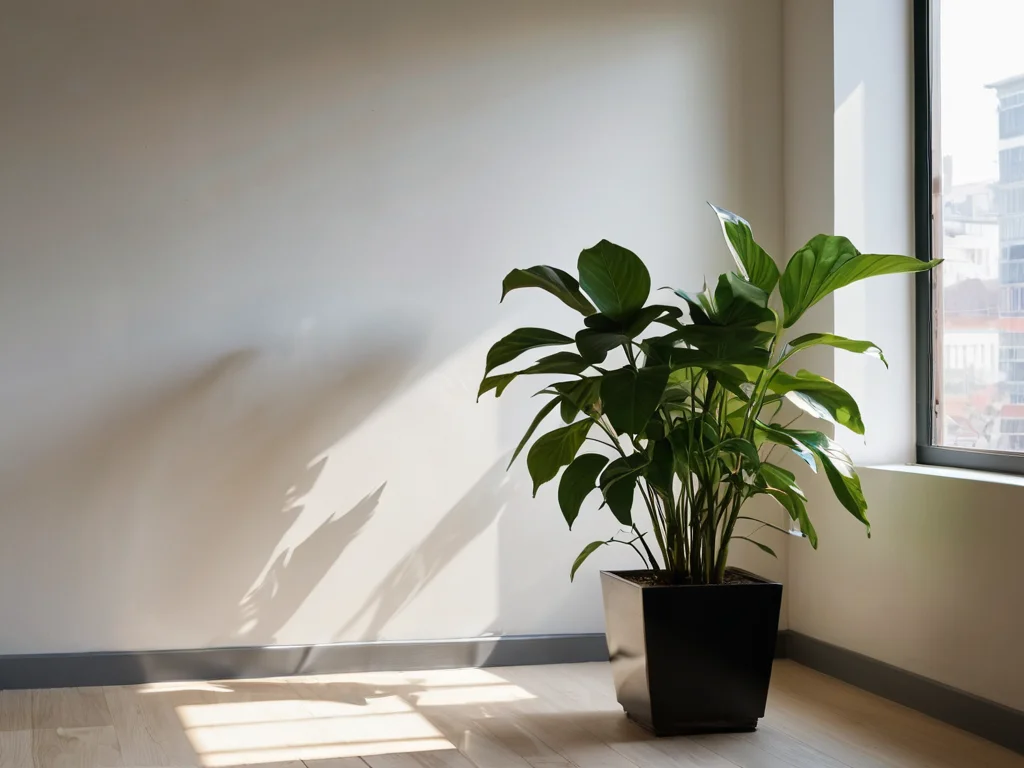
As already mentioned, a wilting or sick plant becomes a source of Sha Qi – negative, stagnant energy. This energy is not just “neutral” or “absent”; it actively attracts all the bad things that can happen in your life and blocks the paths for good things to come. Sha Qi is like a funnel that draws in luck, health, prosperity, and harmony, leaving only stagnation and problems behind. This happens because Feng Shui is based on the principle of correspondence: what you see around you reflects what is happening within you and in your life.
The flows of negative energy emanating from a sick plant can manifest in various aspects of the inhabitants’ lives:
- Health: It is believed that a sick plant can reflect or even worsen health problems. If there are chronic illnesses in the house, a wilting flower can become their silent symbol, perpetuating the unhealthy energy. For example, if a plant wilts in the health sector (East), it may indicate weakened immunity or exacerbation of chronic ailments among household members.
- Finances: Stagnation in financial matters, unexpected expenses, decreased income – all of this can be linked to Sha Qi emanating from a dying plant. Especially if it is located in the southeast sector (wealth sector). The energy of decline literally “eats away” at financial flows, preventing them from circulating freely and yielding results.
- Relationships: A wilting plant can symbolize the fading of feelings, the emergence of disagreements and conflicts in relationships between spouses or family members. If it is located in the southwest sector (love and marriage sector), it may indicate a cooling of passion, alienation, or even the possibility of separation.
- Career and Development: Lack of new opportunities, professional stagnation, difficulties in achieving goals can be provoked by Sha Qi. A sick plant in the north sector (career sector) can literally “freeze” your professional prospects, and in the east sector (family and new beginnings), it can block any initiatives and progress.
Feng Shui masters strongly recommend responding promptly to any signs of wilting in plants. The longer a sick plant stays in your home, the more Sha Qi it accumulates and spreads, and the harder it will be to restore balance and attract luck. Your attention and timely actions are not just plant care; they are active work to harmonize your space’s energy and improve your quality of life.
Diagnosing Your Green Companion’s “Illness”: Learning to Read the Signs
To correctly respond to a plant’s condition, you must first learn to “read” its signals. In Feng Shui, observation is a key skill that allows you to understand what is happening with the energy in your home. Each symptom of wilting or illness can have both a perfectly understandable biological cause and a deeper, energetic meaning.
Let’s look at the main “symptoms” and their Feng Shui interpretations:
- Yellowing leaves: Most often, this indicates excess moisture, lack of nutrients, or light. From a Feng Shui perspective, yellow leaves can symbolize sadness, melancholy, lack of vitality, as well as an imbalance of the Water or Earth elements. Too much Water can “suffocate” the roots (weaken Earth), and a lack of light (Yang energy) can lead to decline.
- Wilting and drooping: The plant looks tired, its stems and leaves are drooping. This can be due to lack of water, temperature fluctuations, or transplant shock. In Feng Shui, this is a sign of exhaustion, lack of support, and depletion of Qi energy. It indicates weakness, lack of support, possibly a feeling of helplessness in someone in the household or in some aspect of their life.
- Dry, brown, and brittle leaves: Usually, this is a sign of lack of moisture, dry air, or too intense sunlight. Energetically, it is associated with excess Fire energy, stress, aggression, burnout. Such leaves can symbolize conflicts, emotional tension, or excessive hustle that “burns out” internal resources.
- Slow growth or cessation of growth: If a plant is not growing, despite good care, it can be a signal of stagnant energy. Biologically, it’s a lack of light, nutrients, or too small a pot. In Feng Shui, it is a symbol of stagnation, lack of development, and blockage of Qi flows in that area of life. It can indicate a lack of progress in career, education, or personal projects.
- Pests and diseases: The appearance of insects, mold, or other diseases. From a Feng Shui perspective, pests symbolize external attacks, invasion of negativity, conflicts, and vulnerability. Plant diseases can indicate hidden problems that “eat away” at the energy of the home or its inhabitants from within. This can be related to gossip, envy, or other negative external influences.
- Leaf drop: Can be a natural process for some plants or indicate stress, sudden changes in conditions. In Feng Shui, it is a symbol of loss, decline, the end of something. If leaves fall without apparent reason, it can indicate uncontrollable changes, losses, or that a stage in life is coming to an end.
- Root rot: Often caused by overwatering or poor drainage. Energetically, it indicates deep, hidden problems, “rotting” foundations. This can be related to lies, deception, problems in the foundation of a family or business that have not yet surfaced but are already destroying from within.
In addition to obvious signs, it is important to pay attention to your own feelings. What do you feel when you look at this plant? Do you feel anxiety, sadness, or irritation? Your intuition is a powerful tool for diagnosing the energetic state.
Making a Fateful Decision: Save or Say Goodbye Forever According to Feng Shui?
After diagnosing the problem, an important question arises: is there a chance to save the plant, or has the time come to part with it? From a Feng Shui perspective, this is not just a practical decision but an energetically significant choice that affects the circulation of Qi in your home. Sometimes, holding onto a dying plant for sentimental reasons, we unconsciously prolong the period of stagnation and negativity.
When making a decision, consider the following aspects:
- Degree of damage: Assess the scale of the “illness.” If only a few leaves or stem tips are damaged, and there are visible new growth points, the chances of saving it are high. If most of the plant looks dead, the stem is rotten at the base, and the leaves are falling off en masse and are covered in mold, then resuscitation may be futile and even counterproductive from an energetic point of view. It is believed that attempts to revive a hopelessly sick plant can only solidify the energy of struggle and illness in your home.
- Potential for recovery: Carefully examine the plant for healthy shoots, live roots, or buds. If life is still flickering, it’s a good sign. If the plant has completely lost its leaves, and the roots are dry or rotten, it is likely that it will not recover.
- Your readiness and resources: Are you willing to spend time, effort, and energy on long and thorough plant care? Saving requires patience and attention. If you realize you cannot provide proper care, it is better to let the plant go so as not to worsen the situation.
- Emotional connection and symbolic meaning: If the plant has special value for you (a gift from a loved one, a flower you’ve grown with love for many years), then it’s worth making every effort to save it. However, even in this case, it is important not to become pathologically attached to it, understanding that sometimes letting go is also a manifestation of love and respect for the cycle of life.
Feng Shui masters sometimes use the “rule of three chances”: if you have taken all reasonable measures to save the plant, but it shows no signs of improvement within a reasonable period (e.g., several weeks), then it may be time to admit that its life cycle in your home has ended. Stubbornly clinging to dying energy only harms your space and yourself.
Remember that the decision should be conscious and bring you a sense of inner peace. If you are saving a plant, do it with faith in success; if you are saying goodbye, do it with gratitude and respect.
Step-by-Step Resuscitation: Restoring the Plant’s Vitality Through Proper Care
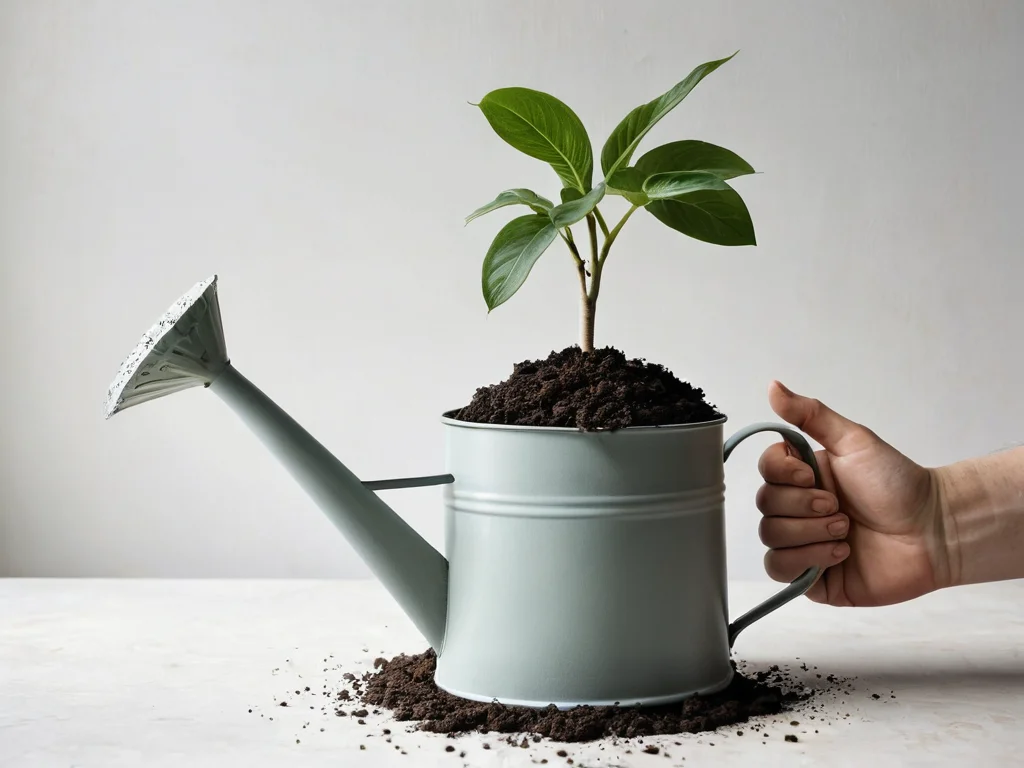
If you have decided to save your green companion, it’s time to take action. Each step in the resuscitation process, from a Feng Shui perspective, is not just an agricultural measure but a way to restore Qi flows and harmonize the elements affecting the plant’s life.
- Relocation to a favorable zone: First, move the plant. Study your home’s Bagua map and determine which sector it is in. If it is in a zone currently experiencing unfavorable influences (e.g., annual flying star 5 Yellow or 2 Black), relocate it. It is best to temporarily place a sick plant in the East sector (health and new beginnings) or in a sector corresponding to its element (e.g., a woody plant – in the East or Southeast). Avoid placing wilting plants near sharp furniture corners, open shelves, or under hanging beams, as this creates Sha Qi.
- Repotting in fresh soil: If the roots are rotting or the soil is depleted, carefully remove the plant from the pot. Inspect the roots: remove all rotten, damaged, or dry parts with a sharp, sterile tool. This is a symbolic “cleansing” of old, negative energy. Repot the plant into a new, clean pot with good drainage and fresh, nutrient-rich soil. Fresh soil is a new source of the Earth element, giving the plant stability and a nourishing foundation for recovery.
- Pruning damaged parts: Remove all dry, yellowed, brown, or diseased leaves and stems. This will not only improve its appearance but also allow the plant to direct its energy to developing healthy parts, rather than supporting dying ones. From a Feng Shui perspective, pruning is the removal of stagnant Qi, creating space for new, fresh energy.
- Watering balance: Determine the correct watering regimen. Lack of water is depletion, excess is rot. Both disrupt the Water balance. Water moderately, using settled water at room temperature. It is believed that water enriched with positive energy (e.g., after reciting affirmations or prayers over it) promotes faster healing.
- Ensuring optimal light and air: Make sure the plant receives enough light but is not under direct scorching sun rays if it doesn’t like it. Light is Yang energy, vital for growth. Ventilate the room, but avoid drafts that can cause stress. Fresh air is free Qi.
- Fertilizing and pest protection: If the plant is severely weakened, use mild, natural fertilizers to give it strength. This is support for the Earth and Wood elements. Regularly inspect leaves for pests and use eco-friendly means to eliminate them. Getting rid of pests is eliminating external negative influences and energetic “vampires.”
- Energy of intention: Most importantly, care for the plant with love and positive intention. Talk to it, stroke its leaves, imagine it filling with vitality. Your personal Qi and your intention energy are of great importance for the plant’s recovery.
Qi Activation: Feng Shui Methods to Accelerate Healing and Protection
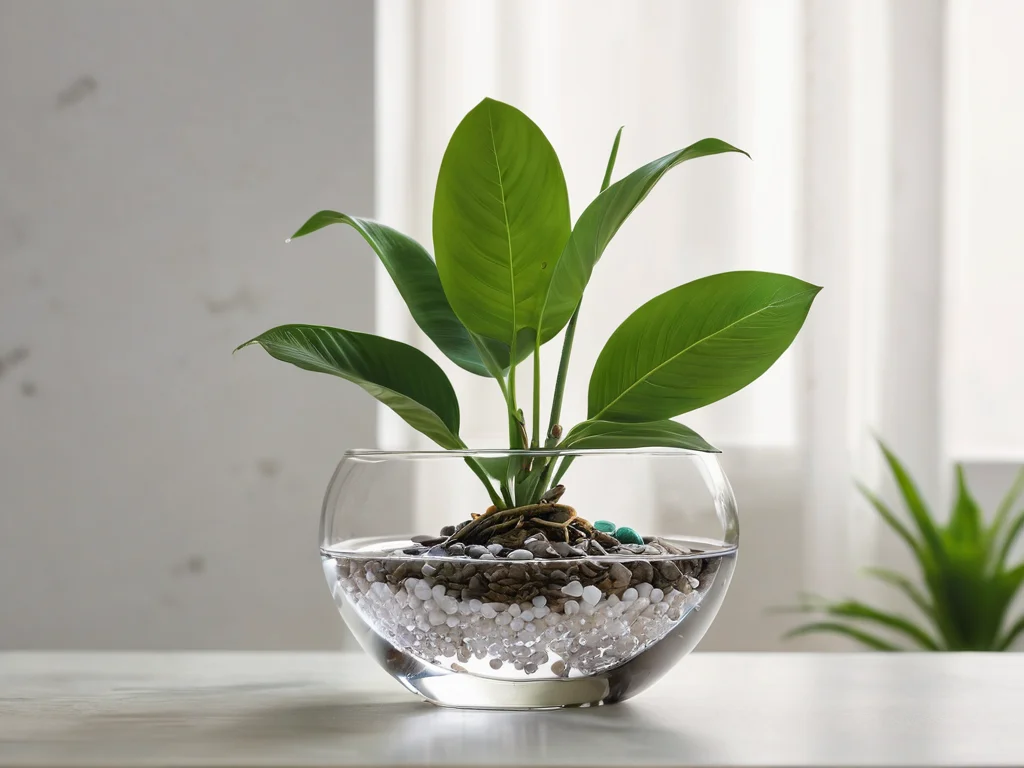
In addition to basic care, there are special Feng Shui methods that can help accelerate your plant’s healing process and create a protective, favorable energy field around it. These methods are aimed at activating beneficial Qi energy and eliminating any residual negative influences.
- Sound therapy: Place small, melodious bells or “wind chimes” near the plant. Their gentle sounds create vibrations that are believed to dissipate stagnant energy and attract new, fresh Qi. Play calming classical music or nature sounds near the plant; this also promotes harmonization.
- Crystals for healing: Place natural crystals around the plant’s pot. It is believed that each crystal has a specific energy:
- Green Aventurine: promotes growth, prosperity, and healing.
- Rose Quartz: attracts love and harmony, calms.
- Clear Quartz: amplifies the energy of other stones and purifies space.
- Amethyst: brings peace, protects from negativity.
Simply place a few small, cleansed crystals in the soil or on a stand near the plant.
- Color therapy: Choose a pot or stand for the plant in colors that promote its healing and growth.
- Green: color of growth, renewal, health (Wood element).
- Blue/Light Blue: color of calm, healing, water (Water element).
- Brown/Terracotta: color of stability, nourishing earth (Earth element).
Avoid black, which can absorb energy and worsen wilting.
- Symbols of luck and growth: Place small symbols near the plant that are associated with growth, longevity, and prosperity. This could be a small figurine of a turtle (longevity, stability), a dragon (strength, protection), Buddha (peace, wisdom), or simply a symbol of luck, such as a Chinese coin or a three-legged toad. These symbols serve as powerful Qi activators.
- Intention and visualization: Regularly spend a few minutes visualizing a healthy and thriving plant. Imagine bright, green light filling it, new leaves and buds unfurling. Your strong, positive intention is the most powerful tool capable of influencing energy.
- Energetic space cleansing: Periodically cleanse the space around the plant.
- Burning incense: Use sticks with sandalwood, frankincense, or sage to purify the air and dissipate stagnant energy.
- Salt: Place a small container of sea salt near the plant for a few days to absorb negativity, then discard the salt.
- Essential oil sprays: Dilute a few drops of lavender, lemon, or rosemary essential oil in water and spray around the plant (but not on the plant itself, if it’s sensitive) to purify and refresh the energy.
By applying these methods in conjunction with careful care, you will not only help your plant recover but also strengthen positive Qi flows throughout your home, creating a harmonious and prosperous environment.
Farewell with Respect: How to Properly Dispose of a Deceased Plant and Cleanse the Space
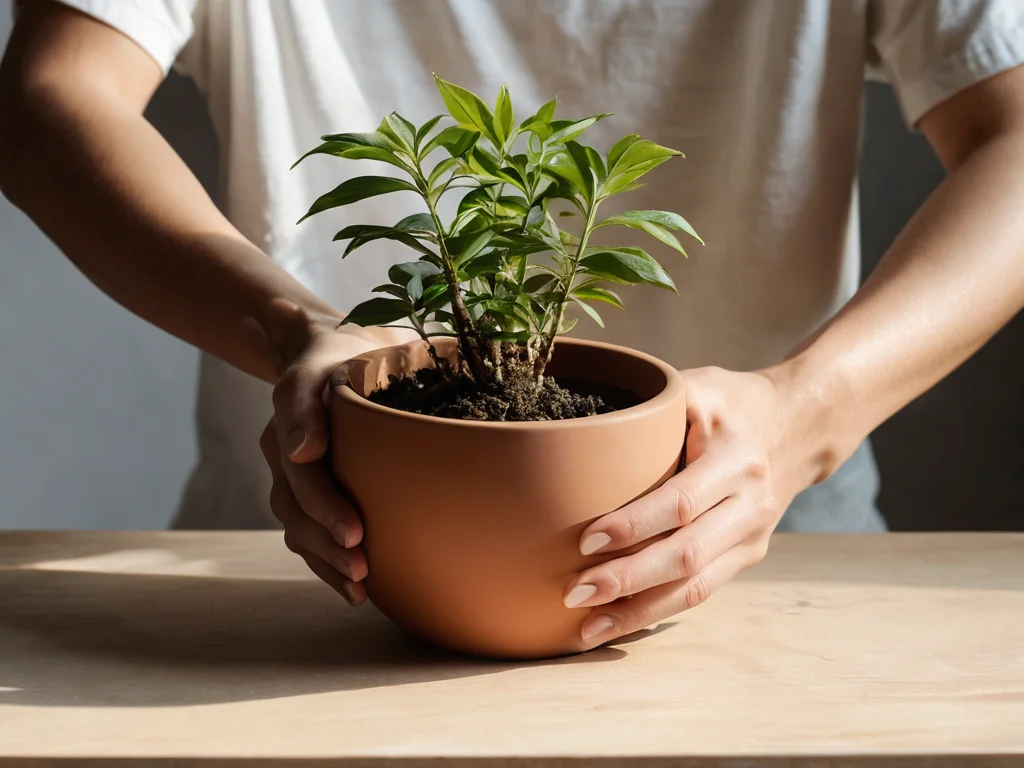
Despite all our efforts, sometimes a plant, alas, cannot be saved. In Feng Shui, it is very important not just to throw away a deceased plant but to do so with respect and perform an energetic cleansing of the space. Improper disposal or leaving a dead plant in the house can continue to emit Sha Qi and attract negativity.
Here’s how to proceed correctly:
- Gratitude and farewell: Before disposing of the plant, take a moment for gratitude. Thank it for the beauty and energy it brought to your home, for the lessons it may have taught. This simple act helps close the energetic cycle and avoid feelings of guilt or regret, which can also create stagnation.
- Return to Earth: If possible, the best way to dispose of it is to return the plant to the earth.
- Composting: If you have a compost bin, this is the ideal option. The plant will decompose and return to the natural cycle.
- Burial: If you have a garden, you can bury the plant in the ground. This symbolizes the complete cycle of life and death, and also gives the plant an opportunity to “return to its origins.”
If these options are not available, simply throw the plant in the trash bin, but do so with the thought that it has completed its journey and its energy is now being released. The pot should be thoroughly washed or, if damaged, also disposed of.
- Thorough physical cleaning: After removing the plant, you need to thoroughly clean the place where it stood. Wipe away dust, remove soil residue, wash the floor. This eliminates physical traces of stagnation and clutter that can be a source of Sha Qi.
- Energetic space cleansing: This is a critically important step. The place where the sick or deceased plant stood may have absorbed its negative energy. This sector needs to be cleansed:
- Open windows: Let in fresh air and sunlight, which dissipate stagnant energy.
- Salt: Place a small bowl of coarse sea salt in the spot where the plant stood for 24 hours. Salt excellently absorbs negative energy. Then, immediately discard the salt without touching it with bare hands.
- Burning incense or sage: Walk around this area, fumigating it with incense or sage smoke, visualizing the negativity leaving.
- Sound: Ring a bell or sing a mantra so that the vibrations cleanse the space.
- Introducing new life: After cleansing the space, it is highly advisable to immediately place a new, healthy, and living plant in its place. This symbolizes renewal, the influx of fresh energy, and the continuity of the life cycle. Choose a plant that thrives in that sector and corresponds to the elements of that location. If you are not ready to place a live plant immediately, you can temporarily place a vase with fresh cut flowers (but be sure to remove them as soon as they start to wilt).
Proper farewell to a deceased plant is an important ritual that helps maintain the purity of your home’s energy field and ensures a constant influx of positive Qi.
Your Home is Your Fortress: Maintaining Plant Vitality for Constant Well-being

Your plants are not just living beings; they are active participants in creating harmony and prosperity in your home. Maintaining their health and vitality is not just about caring for them but also about continuous work to improve the quality of your own life. It is believed that a healthy, blooming home garden reflects and enhances the energy of well-being, health, and success in the family.
To ensure your home is always filled with Sheng Qi emanating from plants, the following is recommended:
- Regular inspection and prevention: Don’t wait for a plant to start wilting. Make a weekly inspection of your green companions a part of your routine. Check leaves for pests, soil for moisture, and appearance for the first signs of wilting. Early problem detection allows for quick resolution, preventing Sha Qi accumulation.
- Optimal placement: Place plants according to Feng Shui principles. For example, plants with rounded leaves are well-suited for the southeast sector (wealth), and tall, upright plants for the east (health, family) or south (fame). Avoid sharp, thorny plants (except cacti placed on exterior windowsills for protection from Sha Qi) inside the house, as they can create “Sha arrows.”
- Variety of shapes and sizes: It is believed that a variety of plants in the home promotes more complete and balanced Qi circulation. Different leaf shapes and plant sizes represent different aspects of energy and elements. A combination of tall and low, leafy and flowering plants creates a dynamic and harmonious landscape.
- Timely replacement: If a plant has clearly outgrown its pot, become too large for its chosen location, or, despite all efforts, continues to be sick and lose vitality, do not be afraid to replace it. From a Feng Shui perspective, it is better to have one healthy, even if small, plant than many sick and wilting ones.
- Support with fresh flowers: Bring fresh cut flowers into your home. They are a powerful source of Sheng Qi, especially when they are in bloom. However, it is very important to remove them as soon as they start to wilt to prevent the creation of Sha Qi. Fresh water in a vase is also a symbol of purity and renewal.
- Your personal energy: Remember that plants are very sensitive to their owner’s energy. Care for them with love, attention, and positive thoughts. Your good mood and benevolent attitude are transmitted to the plants, contributing to their growth and prosperity. They become your allies in creating a harmonious home.
Thus, caring for plants in your home is not just a hobby; it is a conscious step towards improving the quality of your life. May your home be filled with healthy, living energy that reflects your own prosperity and well-being. By following these simple yet wise Feng Shui tips, you will create a space that will support you and your family, attracting luck, health, and joy every day.
